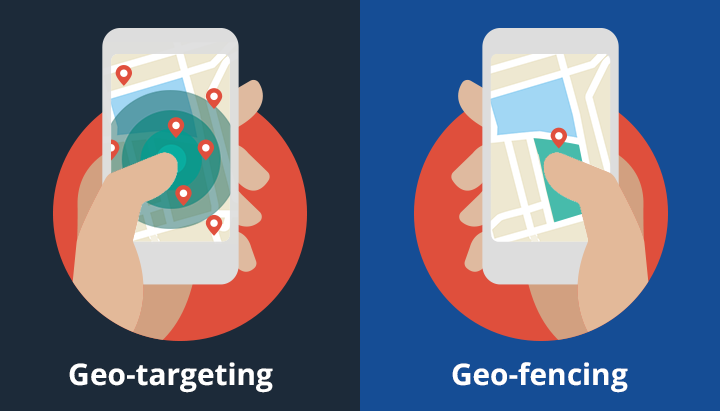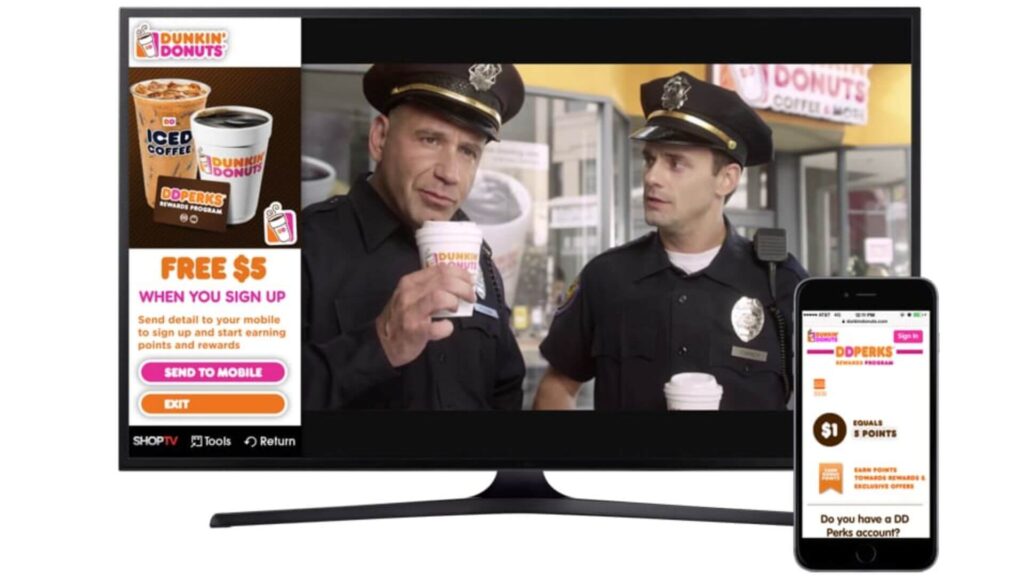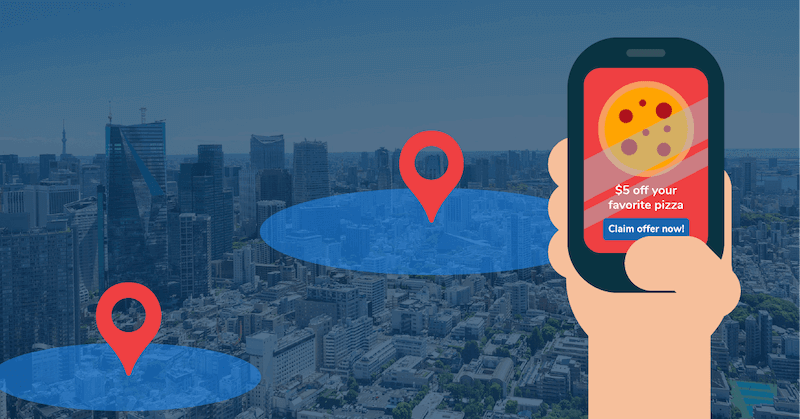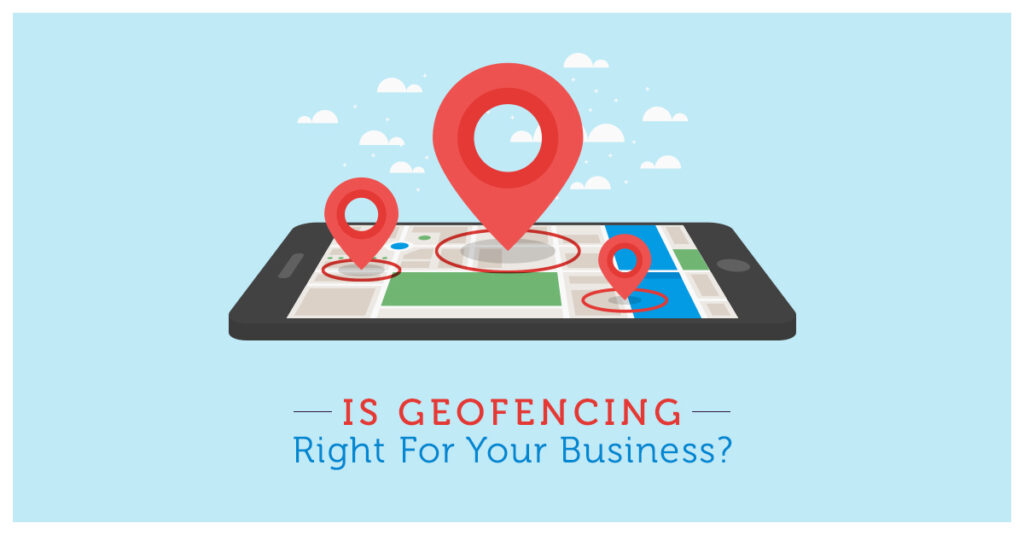Geofencing Advertising: Targeting Meets Precision
Welcome to the world of geofencing advertising, where targeting meets precision. In this digital era, businesses are constantly looking for innovative ways to reach their target audience, and geofencing advertising is becoming a powerful tool in their marketing arsenal.

What is Geofencing Advertising?
Geofencing advertising is a location-based marketing strategy that allows businesses to deliver targeted ads to potential customers within a specific geographical area. By leveraging the GPS technology on smartphones, virtual boundaries, known as geofences, are created. When a user enters or exits these boundaries, a customized ad is delivered to their mobile device.
Geofencing advertising offers businesses the ability to precisely target their audience based on their location, ensuring that their message reaches the right people at the right time and place. Whether it’s a retail store offering a special promotion or a restaurant enticing customers with a limited-time offer, geofencing advertising enables real-time interaction and engagement.

How Does Geofencing Advertising Work?
Geofencing advertising relies on the GPS technology of smartphones to create virtual boundaries. Once these boundaries, or geofences, are established, businesses can set up triggers to deliver customized ads to users within the defined area. These triggers can be based on entering or exiting the geofence or even the duration of time spent within the boundary.
When a user enters the geofence, their smartphone’s GPS signal triggers the delivery of a targeted ad. This ad can appear as a push notification, banner ad, or even an SMS message. The content of the ad can be tailored to suit the specific campaign objectives, whether it’s promoting a sale, offering a discount, or providing information about a new product.

Benefits of Geofencing Advertising
Geofencing advertising offers a range of benefits for businesses looking to enhance their marketing efforts.
1. Precise Targeting
One of the key advantages of geofencing advertising is its ability to precisely target a specific audience based on their location. By delivering ads to users within a defined geographical area, businesses can ensure that their message reaches the right people who are most likely to be interested in their products or services.
2. Real-Time Interaction
Geofencing advertising allows for real-time interaction with potential customers. By delivering ads when users enter or exit a geofence, businesses can engage with their audience at the exact moment when they are most likely to be receptive to their message. This real-time interaction increases the chances of capturing the attention and interest of potential customers.
3. Increased Foot Traffic
Geofencing advertising can help businesses increase foot traffic to their physical locations. By delivering targeted ads to users who are in close proximity to their store or establishment, businesses can entice potential customers to visit their location. This can lead to increased sales and brand exposure.
4. Cost-Effective
Compared to traditional forms of advertising, geofencing advertising can be a cost-effective strategy. Businesses have the ability to set specific budgets and only pay for the ads that are delivered. This allows for more control over marketing expenses and ensures that the advertising budget is allocated efficiently.
5. Enhanced Customer Insights
Geofencing advertising provides businesses with valuable customer insights. By analyzing the data collected from geofencing campaigns, businesses can gain a deeper understanding of customer behavior, preferences, and demographics. This information can be used to further refine targeting strategies and optimize future marketing efforts.

Geofencing Advertising Statistics
The effectiveness of geofencing advertising is supported by a variety of statistics. Here are some key figures that highlight the impact of this marketing strategy:
- According to a study by xAd, 80% of consumers are more likely to engage with a brand that offers personalized experiences based on their location.
- Location-targeted mobile advertising is projected to reach $32 billion in ad spend by 2021, according to BIA/Kelsey.
- A survey by RetailMeNot found that 60% of consumers are more likely to visit a store if they receive a location-based alert.
- Research by ThinkNear revealed that location-based ads have a 45% higher click-through rate compared to non-location-based ads.
These statistics demonstrate the effectiveness of geofencing advertising in capturing consumer attention and driving engagement.

Creating an Effective Geofencing Advertising Campaign
To create an effective geofencing advertising campaign, businesses should consider the following strategies:
1. Define Clear Objectives
Before launching a geofencing campaign, it is important to define clear objectives. Whether the goal is to increase foot traffic, boost sales, or raise brand awareness, having a clear objective will help guide the campaign strategy and ensure that the messaging and targeting align with the desired outcomes.
2. Identify the Right Geofences
Choosing the right geofences is crucial for the success of a geofencing advertising campaign. Businesses should identify locations that are relevant to their target audience and align with their campaign objectives. This could be specific neighborhoods, shopping centers, events, or even competitor locations.
3. Craft Compelling Ad Content
The content of the ads is essential for capturing the attention of potential customers. Businesses should create compelling and relevant ad content that resonates with their target audience. This could include enticing offers, personalized messages, or clear calls to action.
4. Optimize Timing and Frequency
Timing and frequency play a significant role in the success of geofencing advertising campaigns. Businesses should consider the time of day, day of the week, and duration of the campaign to ensure that their ads are delivered at optimal times. Additionally, finding a balance between delivering enough ads to create awareness without overwhelming users is essential.
5. Monitor and Analyze Performance
Monitoring and analyzing the performance of a geofencing advertising campaign is crucial for optimizing future efforts. Businesses should track key metrics such as click-through rates, conversions, foot traffic, and customer engagement. This data can provide valuable insights for refining targeting strategies and improving campaign effectiveness.

Targeting Strategies for Geofencing Advertising
Effective targeting is the key to a successful geofencing advertising campaign. Here are some targeting strategies to consider:
1. Demographic Targeting
Demographic targeting involves delivering ads based on specific demographic characteristics such as age, gender, income level, or occupation. By understanding the demographic profile of their target audience, businesses can tailor their messaging to appeal to their customers’ preferences and interests.
2. Behavioral Targeting
Behavioral targeting involves delivering ads based on user behavior and interests. By analyzing data such as browsing history, app usage, or purchase behavior, businesses can deliver ads that align with users’ interests and preferences. This can significantly increase the relevance and effectiveness of the advertising campaign.
3. Competitor Targeting
Competitor targeting involves delivering ads to users who are in close proximity to competitor locations. By strategically targeting potential customers who are near competitors, businesses can entice them to consider their offerings instead. This strategy can be particularly effective for businesses looking to gain an edge in a competitive market.
4. Event Targeting
Event targeting involves delivering ads to users who are attending or near specific events. By targeting users based on their proximity to events, businesses can reach a highly engaged audience that is likely to be receptive to their message. This strategy is particularly relevant for businesses in industries such as entertainment, sports, or hospitality.
Geofencing Advertising Platforms and Tools
There are several platforms and tools available to help businesses implement geofencing advertising campaigns. Here are some popular options:
1. Google Ads
Google Ads offers geofencing capabilities through its location targeting feature. Businesses can define specific areas on a map and deliver ads to users within those boundaries. Google Ads also provides robust analytics and reporting to track campaign performance.
2. Facebook Ads
Facebook Ads allows businesses to target users based on their location, interests, and demographics. With Facebook’s extensive user base and detailed targeting options, businesses can create highly customized geofencing advertising campaigns.
3. Foursquare
Foursquare offers a location-based advertising platform that enables businesses to reach users based on their real-time location. With Foursquare’s powerful location data, businesses can create highly targeted geofencing campaigns.
4. X-Mode
X-Mode is a location data platform that provides businesses with accurate and privacy-friendly location data. Through X-Mode’s geofencing capabilities, businesses can create precise and effective advertising campaigns.

Geofencing Advertising vs. Other Location-Based Marketing Techniques
While geofencing advertising is an effective location-based marketing technique, it’s essential to understand how it compares to other strategies. Here are some key differences:
1. Geotargeting
Geotargeting involves delivering ads to users based on their location, similar to geofencing advertising. However, geotargeting typically relies on IP addresses or zip codes, while geofencing advertising uses GPS technology to create virtual boundaries. Geofencing advertising offers greater precision and real-time interaction compared to geotargeting.
2. Beacon Marketing
Beacon marketing utilizes small devices called beacons to deliver targeted messages to users in close proximity. While similar in concept to geofencing advertising, beacon marketing requires users to have a specific app installed and Bluetooth enabled. Geofencing advertising, on the other hand, can reach a broader audience without the need for additional apps or devices.
3. Proximity Marketing
Proximity marketing involves delivering ads to users who are in close proximity to a specific location or point of interest. While geofencing advertising can be considered a form of proximity marketing, it offers greater flexibility and targeting options compared to traditional proximity marketing techniques.

Case Studies of Successful Geofencing Advertising Campaigns
To illustrate the effectiveness of geofencing advertising, let’s look at some real-world case studies:
1. Starbucks
Starbucks used geofencing advertising to drive foot traffic to their stores and promote their limited-time offers. By targeting users within a specific radius of their locations, Starbucks delivered personalized ads with enticing offers. This campaign resulted in a significant increase in store visits and sales.
2. Taco Bell
Taco Bell leveraged geofencing advertising to promote their new menu items and drive customer engagement. By delivering ads to users near their locations during peak dining hours, Taco Bell was able to capture the attention of potential customers at the right time. This campaign resulted in increased brand awareness and a boost in sales.
3. Mercedes-Benz
Mercedes-Benz used geofencing advertising to target users attending a major auto show. By delivering personalized ads to users within the vicinity of the event, Mercedes-Benz was able to showcase their latest models and attract potential customers. This campaign resulted in a significant increase in test drives and vehicle sales.
These case studies highlight the versatility and effectiveness of geofencing advertising across different industries and marketing objectives.

Conclusion
Geofencing advertising offers businesses a powerful and precise tool to reach their target audience in a location-based manner. With the ability to deliver customized ads to users within specific geographical areas, businesses can ensure that their message reaches the right people at the right time and place. By leveraging the real-time interaction and engagement that geofencing advertising provides, businesses can increase foot traffic, boost sales, and enhance their overall marketing efforts. So, harness the power of geofencing advertising and take your business to new heights in the digital era.

